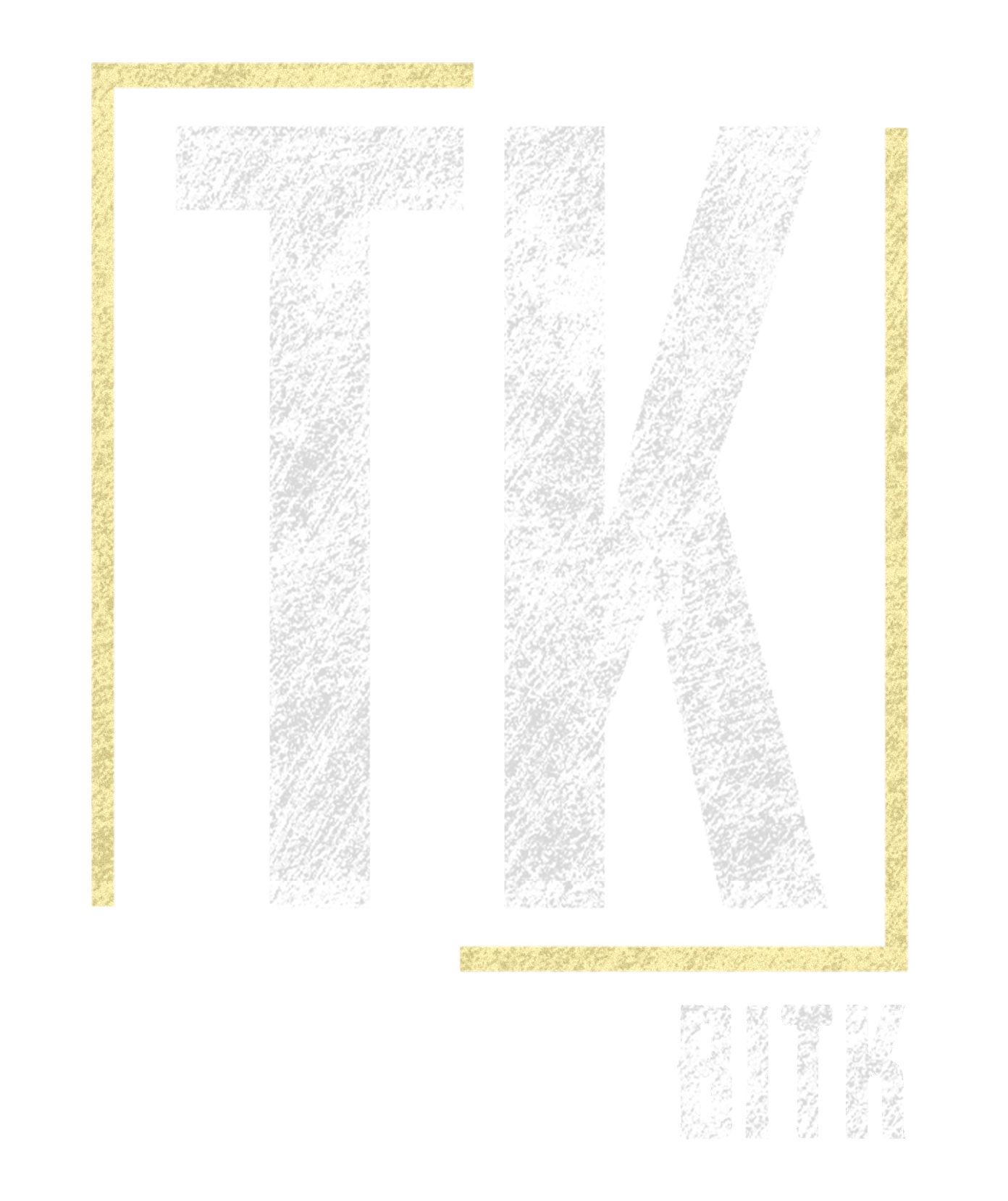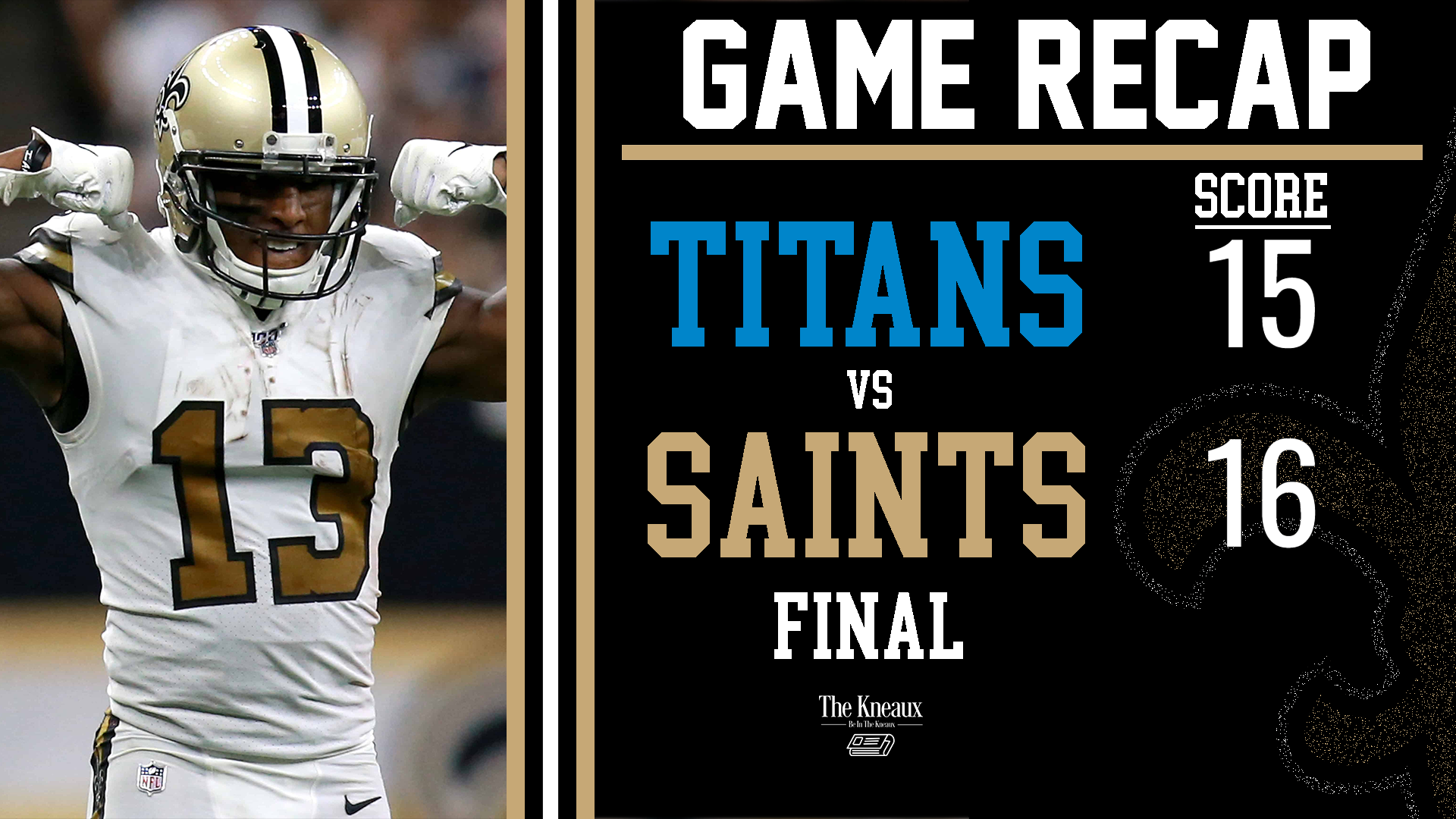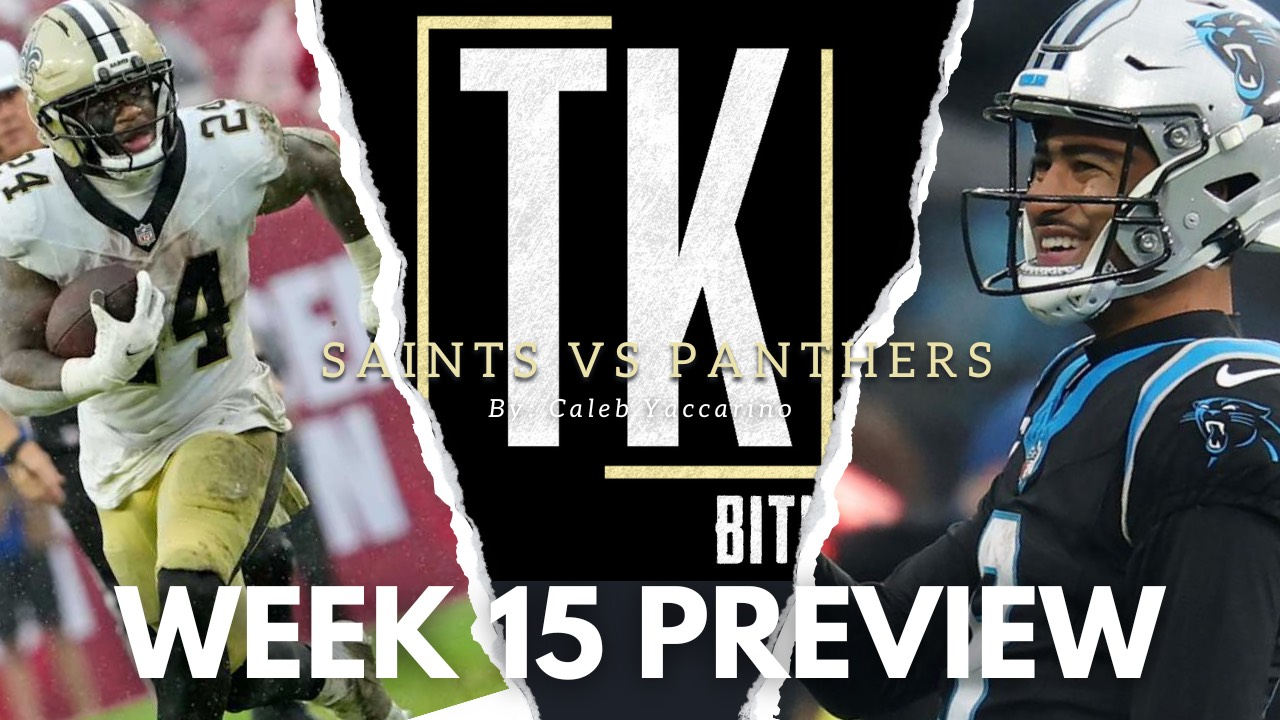Saints 2023 Week 1 Recap
In an absolute defensive struggle, the Saints defense made the most plays, by intercepting Ryan Tannehill 3 times, to give the Saints a 16- 15 win in the Superdome in
Week 1. There is undoubtedly a lot to clean up for the Saints but it was essential that they gritted through a sluggish offensive showing and got the win. Here’s how it all went down.
Team Stats
(Saints/Titans)
Final Score: 16-15
First downs: 15-16
3rd down efficiency: 7/16- 2/12
Total yards: 351- 285
Red Zone Efficiency: 1/4 - 0/3
Penalties: 7 for 45 yards- 6 for 45 yards
Turnovers- 2- 3
Time of possession- 28:40- 31:20
Key Saints Individual Stats (All stats sourced from ESPN)
Offense
Derek Carr- 23/33 (69.6%) 305 Yards 1 Touchdown 1 Interception 96.1 passer rating
Chris Olave- 8 receptions from 10 targets for 112 yards
Rashid Shaheed- 5 receptions from 6 targets for 89 yards, 1 touchdown + 2 rushes for 11 yards
Jamaal Williams- 18 rushes for 45 yards (2.5 YPC) OOFF
Defense
Marshon Lattimore- 1 interception and 4 pass defenses
Demario Davis- 10 tackles, 9 solo! And 1 TFL
Carl Granderson- 1.5 Sacks, 1 TFL and 4 QB hits
Paulson Adebo- 1 interception and 1 pass defense
Marcus Maye- 6 tackles, 5 solo, 1 interception and 1 pass defense.
Takeaways
Defense
A tough, gritty and frankly nerve-wracking win for the Saints, crucially though it was just that, a win. This game had an ominous air to it from the get-go after Rashid Shaheed fumbled the opening kickoff which gave the Titans’ offense a short field to work with, the Saints defense stepped up (with help from the Domefieldadvantage, who forced two false starts) and held the Titans to only 3 points. From here the Saints defense didn’t look back. They looked like the best defense in the league forcing 3 turnovers, They also sacked Tannehill 3 times but were in his face all gaming hitting him a further 10 times.
The rebuilt d-line was outstanding led by Carl Granderson who was an absolute force, he gave Titans LT Andre Dillard the business from the first whistle. Rookie DT Bryan Bresee and vet Malcom Roach also had really strong days as rushers. The one negative for this unit was 3rd year DE Payton Turner left with a Toe injury, after a strong summer where he finally stayed healthy and looked to have turned a corner, another long-term injury would be a killer for Turner’s development and the Saints depth.
The Secondary was elite, today led by Marshon Lattimore, by the other starters and role players stepped up as well. Adebo was really good opposite him and Alontae Taylor after a rookie pre-season looked to have held up well in the slot, especially as a tackler in the open field and in run support which is vitally important for a Slot CB.
Offense
Now for the offense, which frankly was bad for the most part. A lot of the blame can be put on the offensive line, which struggled mightily most of the game. Especially the left side consisting of Trevor Penning and James Hurst, both of whom were getting beat in run and pass protection. Penning, who looked to give up at least 2 sacks on really bad, quick losses and many many other pressure and hits.
The line play was a big part of Carr's struggles early, especially in the first half. Particularly, Carr struggled in the Red Zone and it was frustrating to not see Taysom Hill in this part of the field. Yes, some of the missed plays were on Carr, the awful interception he threw for one, but many were due to the leaky o-line, I also don't think the play calling helped much either with very little quick passing being called. Coming in clutch, Carr managed to complete a 19-yard touchdown pass to Rashid Shaheed (who ran a nasty route by the way). This was his lone completion in the Red Zone (Carr finished 1-7 on passes from inside the 20).
Carr and the rest of the offense played much better in the second half, namely because Pete Carmichael Jr finally called some quick passing concepts which helped the struggling o-line and the Saints finally gave Penning some help which allowed Carr more time to complete some passes downfield, to Chris Olave and somewhat of a game sealer to Rashid Shaheed. These types of throws showed why the Saints splashed the cash on Carr rather than sticking with the QBs they had last year.
Plenty that needs fixing for certainly some encouraging signs for the offense to build off going forward.
Saints Stock Exchange (Sponsored By… Nobody)
Just a quick hit section each week to highlight which Saints players have their stock value increasing and decreasing after each game, 3 up and 3 down:
Stock Up
- Marshon Lattimore
- Carl Granderson
- Mike Thomas
I could have included the whole defense on this list honestly but that would be cheating, Granderson and Lattimore were just the most dominant for me. The final up I went for was Mike Thomas, not because he was the most dominant of the 3 WRs (both Olave and Shaheed were excellent today) but because Thomas feels like a true riser he got open, showed he infamous strong hands in tough contested catch situations and overall had a really nice game (it could have been even better if Carr hadn't missed him twice after being really open in the Red Zone).
Honourable mention- The Specialists, both Lou Hedley and Blake Grupe looked excellent today, if their play continues like this the Saints nailed those decisions.
Stock Down
- Trevor Penning
- James Hurst
- Keith Kirkwood
Penning and Hurst a pretty obvious so I won't labour the point there. Kirkwood may seem harsh to some and maybe it is, but he’s on here because of one play and one play alone. Its 1st and 10 02:12 on the clock and the Saints are up 2 trying to run out the clock. Pete Carmichael dials up a perfect play, a jet sweep run to Shaheed which goes for 27 yards, Kirkwood gets called for holding, it was the correct call and completely unnecessary by Kirkwood. Shaheed already had the edge and was darting towards the second level there was no need to hold there and if not for Shaheed and Carr connecting on a ballsy bomb on 3rd down 2 plays later, that penalty could have cost the Saints the game.
Make sure to follow me on Twitter and Instagram @SaintsReportUK, for much more Saints content and discussion throughout the 2023 season and beyond.
A quick share helps us a lot!



